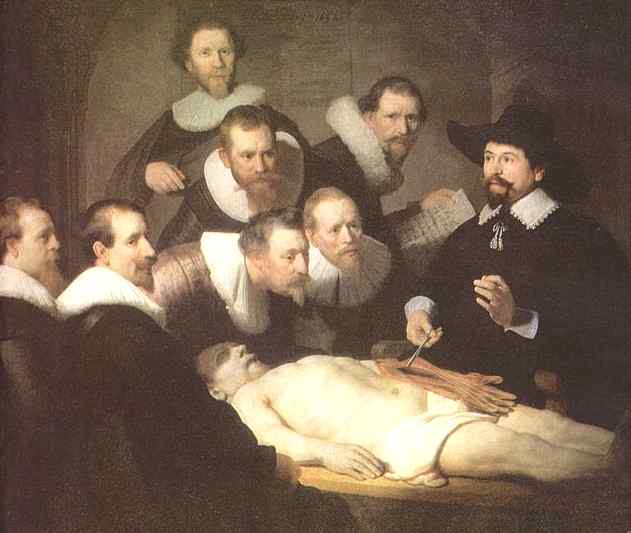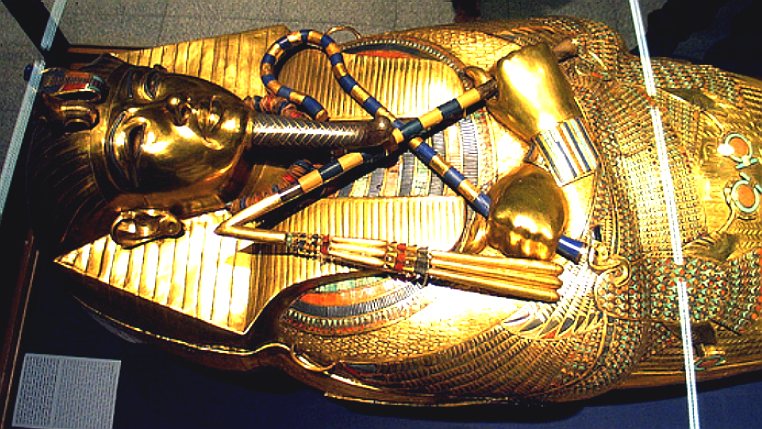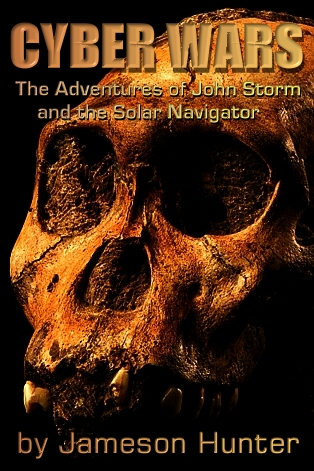|
Death is the end of the life of a biological organism. Death may refer to the end of life as either an event or
condition. Many factors can cause or contribute to an organism's death, including predation, disease, habitat destruction, senescence, malnutrition and accidents or physical injury. The principal causes of
human death in developed countries are diseases related to
aging. Traditions and beliefs related to death are an important part of human culture, and central to many
religions. In medicine, biological details and definitions of death have become increasingly complicated as technology advances. Sometimes death can be caused naturally, or by other things such as violence or chronic diseases.

Arlington
Cemetery, Washington DC
Biology
Fate of dead organisms
In animals, small movements of the limbs (for example twitching legs or wings) known as a postmortem spasm can sometimes be observed following death. Pallor mortis is a postmortem paleness which accompanies death due to a lack of capillary circulation throughout the body. Algor mortis describes the predictable decline in body temperature until ambient temperature is reached. Within a few hours of death rigor mortis is observed with a chemical change in the muscles, causing the limbs of the corpse to become stiff (Latin rigor) and difficult to move or manipulate. Assuming mild temperatures, full rigor occurs at about 12 hours, eventually subsiding to relaxation at about 36 hours; however, decomposition is not always a slow process. Fire, for example, is the primary mode of decomposition in most grassland
ecosystems.
Some organisms have hard parts such as shells or bones which may fossilize before decomposition can occur. Fossils are the mineralized or otherwise preserved remains or traces (such as footprints) of animals, plants, and other organisms. Fossils vary in size from microscopic, such as single cells, to gigantic, such as dinosaurs. A fossil normally preserves only a portion of the deceased organism, usually that portion that was partially mineralized during life, such as the bones and teeth of vertebrates, or the chitinous exoskeletons of invertebrates. Preservation of soft tissues is extremely rare in the
fossil record.
Competition, natural selection and extinction
Death is an important part of the process of natural selection. Organisms that are less adapted to their current environment than others are more likely to die having produced fewer offspring, reducing their contribution to the gene pool of succeeding generations. Weaker genes are thus eventually bred out of a population, leading to processes such as speciation and extinction. It should be noted however that reproduction plays an equally important role in determining survival, for example an organism that dies young but leaves many offspring will have a much greater Darwinian fitness than a long-lived organism which leaves only one.
Extinction
The Dodo, shown here in illustration, is an often-cited example of modern
extinction. Extinction is the cessation of existence of a species or group of
taxa, reducing biodiversity. The moment of extinction is generally considered to be the death of the last individual of that species (although the capacity to breed and recover may have been lost before this point). Because a species' potential range may be very large, determining this moment is difficult, and is usually done retrospectively. This difficulty leads to phenomena such as Lazarus
taxa, where a species presumed extinct abruptly "reappears" (typically in the
fossil record) after a period of apparent absence.
Through evolution, new species arise through the process of speciation — where new varieties of organisms arise and thrive when they are able to find and exploit an ecological niche — and species become extinct when they are no longer able to survive in changing conditions or against superior competition. A typical species becomes extinct within 10 million years of its first
appearance, although some species, called living fossils, survive virtually unchanged for hundreds of millions of years. Only one in a thousand species that have existed remain
today.
Prior to the dispersion of humans across the earth, extinction generally occurred at a continuous low rate, interspersed with rare mass extinction events.

Dead
as a Dodo - extinct bird
After death an organism's remains become part of the biogeochemical cycle. Animals may be consumed by a predator or scavenger. Organic material may then be further decomposed by
detritivores, organisms which recycle detritus, returning it to the environment for reuse in the food chain. Examples include earthworms, woodlice and dung beetles. Microorganisms also play a vital role, raising the temperature of the decomposing material as they break it down into simpler molecules. Not all material need be decomposed fully however; for example coal is a fossil fuel formed in swamp ecosystems.
Starting approximately 100,000 years ago, and coinciding with an increase in the numbers and range of humans, species extinctions have increased to a rate unprecedented[6] since the Cretaceous–Tertiary extinction event. This is known as the Holocene extinction event and is at least the sixth such extinction event. Some experts have estimated that up to half of presently existing species may become extinct by
2100.
Evolution of aging
Enquiry into the evolution of aging aims to explain why almost all living things weaken and die with age (N.B. hydra and the possibility of biological immortality). There is not yet agreement in the scientific community on a single answer. The evolutionary origin of senescence remains one of the fundamental puzzles of biology.
In medicine
Definition
Historically, attempts to define the exact moment of death have been problematic. Death was once defined as the cessation of heartbeat (cardiac arrest) and of breathing, but the development of CPR and prompt defibrillation have rendered that definition inadequate because breathing and heartbeat can sometimes be restarted. This is now called "clinical death". Events which were causally linked to death in the past no longer kill in all circumstances; without a functioning heart or lungs, life can sometimes be sustained with a combination of life support devices, organ transplants and artificial pacemakers.
Today, where a definition of the moment of death is required, doctors and coroners usually turn to "brain death" or "biological death": People are considered dead when the electrical activity in their brain ceases (cf. persistent vegetative state). It is presumed that a stoppage of electrical activity indicates the end of consciousness. However, suspension of consciousness must be permanent, and not transient, as occurs during sleep, and especially a coma. In the case of sleep, EEGs can easily tell the difference. Identifying the moment of death is important in cases of transplantation, as an organ for transplant must be harvested as quickly as possible after the death of the body.
The possession of brain activities, or ability to resume brain activity, is a necessary condition to legal personhood in the United States. "It appears that once brain death has been determined … no criminal or civil liability will result from disconnecting the life-support devices."
(Dority v. Superior Court of San Bernardino County, 193 Cal.Rptr. 288, 291 (1983))
Those people maintaining that only the neo-cortex of the brain is necessary for consciousness sometimes argue that only electrical activity there should be considered when defining death. Eventually it is possible that the criterion for death will be the permanent and irreversible loss of cognitive function, as evidenced by the death of the cerebral cortex. All hope of recovering human thought and personality is then gone given current and foreseeable medical technology. However, at present, in most places the more conservative definition of death — irreversible cessation of electrical activity in the whole brain, as opposed to just in the neo-cortex — has been adopted (for example the Uniform Determination Of Death Act in the United States). In 2005, the case of Terri Schiavo brought the question of brain death and artificial sustenance to the front of American politics.
Even by whole-brain criteria, the determination of brain death can be complicated. EEGs can detect spurious electrical impulses, while certain drugs, hypoglycemia, hypoxia, or hypothermia can suppress or even stop brain activity on a temporary basis. Because of this, hospitals have protocols for determining brain death involving EEGs at widely separated intervals under defined conditions.
Misdiagnosed death
There are many anecdotal references to people being declared dead by physicians and then coming back to life, sometimes days later in their own coffin, or when embalming procedures are just about to begin. Owing to significant scientific advancements in the Victorian era, some people in Britain became obsessively worried about living after being declared
dead.
A first responder is not authorized to pronounce a patient dead. Some EMT training manuals specifically state that a person is not to be assumed dead unless there are clear and obvious indications that death has
occurred. These indications include mortal decapitation, rigor mortis (rigidity of the body), livor mortis (blood pooling in the part of the body at lowest elevation), decomposition, incineration, or other bodily damage that is clearly inconsistent with life. If there is any possibility of life and in the absence of a do not resuscitate (DNR) order, emergency workers are instructed to begin resuscitation and not end it until a patient has been brought to a hospital to be examined by a physician. This frequently leads to situation of a patient being pronounced dead on arrival (DOA). However, some states allow paramedics to pronounce death. This is usually based on specific criteria. Aside from the above mentioned, conditions include advanced measures including CPR, intubation, IV access, and administering medicines without regaining a pulse for at least 20 minutes.
In cases of electrocution, CPR for an hour or longer can allow stunned nerves to recover, allowing an apparently-dead person to survive. People found unconscious under icy water may survive if their faces are kept continuously cold until they arrive at an emergency
room. This "diving response", in which metabolic activity and oxygen requirements are minimal, is something humans share with
cetaceans called the mammalian diving
reflex.
As medical technologies advance, ideas about when death occurs may have to be re-evaluated in light of the ability to restore a person to vitality after longer periods of apparent death (as happened when CPR and defibrillation showed that cessation of heartbeat is inadequate as a decisive indicator of death). The lack of electrical brain activity may not be enough to consider someone scientifically dead. Therefore, the concept of information theoretical death has been suggested as a better means of defining when true death actually occurs, though the concept has few practical applications outside of the field of cryonics.
There have been some scientific attempts to bring dead organisms back to life, but with limited
success. In science fiction scenarios where such technology is readily available, real death is distinguished from reversible death.

The
Black Death - classic painting
Legal Definition of Death
For someone whose death is faked, or misdiagnosed, the following are legal aspect that are true about those who are pronounced dead, who are unverified as alive by family or friends:
-
Dead people cannot receive insurance, inheritance, or social security.
-
Dead people do not have to pay taxes, although the next family member must cover any
debts.
-
Dead people also cannot hold a job, or be paid a salary, unless their identity can somehow be proven. Nor can they own an apartment, or do any process requiring verification of
identity.
-
Dead people cannot
vote.
-
Dead people are classified as vagrants, although the law likely has no means to arrest the
dead.
In short, under legal definition, a person presumed dead should not receive any of the advantages of being alive, but also may or may not receive punishments, because they are technically not supposed to still belong to this world (even though they do).
Causes of human death
Death can be caused by disease, suffocation/asphyxiation or prolonged lack of
oxygen to the brain, or physical trauma as a result of an accident ("unintentional circumstance"), homicide ("intentional act by someone else"), or suicide ("intentional act against one's
self"). The leading cause of death in developing countries is infectious disease. The leading causes of death in developed countries are atherosclerosis (heart disease and stroke),
cancer, and other diseases related to obesity and aging. These conditions cause loss of homeostasis, leading to cardiac arrest, causing loss of oxygen and nutrient supply, causing irreversible deterioration of the brain and other tissues. With improved medical capability, dying has become a condition to be managed. Home deaths, once normal, are now rare in the developed world.
In developing nations, inferior sanitary conditions and lack of access to medical technology makes death from infectious diseases more common than in developed countries. One such disease is tuberculosis, a bacterial disease which killed 1.7 million people in
2004. Malaria causes about 400–900 million cases of fever and approximately one to three million deaths
annually. AIDS death toll in Africa may reach 90-100 million by
2025.
Tobacco smoking killed 100 million people worldwide in the 20th century and could kill 1 billion people around the world in the 21st century, the WHO Report
warned.
Many leading developed world causes of death can be postponed by diet and physical activity, but the accelerating incidence of disease with age still imposes limits on human longevity. The evolutionary cause of aging is, at best, only just beginning to be understood. It has been suggested that direct intervention in the aging process may now be the most effective intervention against major causes of
death.
Signs
The signs of death, strongly indicating that a person is no longer alive, are:
-
Pallor mortis, paleness which happens almost instantaneously (in the 15–120 minutes after the death)
-
Algor mortis, the reduction in body temperature following death. This is generally a steady decline until matching ambient temperature
-
Rigor mortis, the limbs of the corpse become stiff (Latin rigor) and difficult to move or manipulate
-
Livor mortis, a settling of the blood in the lower (dependent) portion of the body
Decomposition, the reduction into simpler forms of matter
Autopsy
An autopsy, also known as a postmortem examination or an obduction, is a medical procedure that consists of a thorough examination of a human corpse to determine the cause and manner of a person's death and to evaluate any disease or injury that may be present. It is usually performed by a specialized medical doctor called a pathologist.
Autopsies are either performed for legal or medical purposes. A forensic autopsy is carried out when the cause of death may be a criminal matter, while a clinical or academic autopsy is performed to find the medical cause of death and is used in cases of unknown or uncertain death, or for research purposes. Autopsies can be further classified into cases where external examination suffices, and those where the body is dissected and an internal examination is conducted. Permission from next of kin may be required for internal autopsy in some cases. Once an internal autopsy is complete the body is reconstituted by
sewing it back together. Autopsy is important in a medical environment and may shed light on mistakes and help improve practices.
A necropsy is a postmortem examination performed on a non-human animal, such as a pet.

The Anatomy Lesson of Dr. Nicolaes Tulp, by Rembrandt, depicts an
autopsy
Life extension
Life extension refers to an increase in maximum or average lifespan, especially in humans, by slowing down or reversing the processes of aging. Average lifespan is determined by vulnerability to accidents and age-related afflictions such as cancer or cardiovascular disease.
Extension of average lifespan can be achieved by good diet, exercise and avoidance of hazards such as smoking and excessive eating of
sugar-containing foods. Maximum lifespan is determined by the rate of aging for a species inherent in its genes. Currently, the only widely recognized method of extending maximum lifespan is calorie restriction. Theoretically, extension of maximum lifespan can be achieved by reducing the rate of aging damage, by periodic replacement of damaged tissues, or by molecular repair or rejuvenation of deteriorated cells and tissues.
Researchers of life extension are a subclass of biogerontologists known as "biomedical gerontologists". They seek to understand the nature of aging and they develop treatments to reverse aging processes or to at least slow them down, for the improvement of health and the maintenance of youthful vigor at every stage of life. Those who take advantage of life extension findings and seek to apply them upon themselves are called "life extensionists" or "longevists". The primary life extension strategy currently is to apply available anti-aging methods in the hope of living long enough to benefit from a complete cure to aging once it is developed, which given the rapidly advancing state of biogenetic and general medical technology, could conceivably occur within the lifetimes of people living today.
Many biomedical gerontologists and life extensionists believe that future breakthroughs in tissue rejuvenation with stem cells, organs replacement (with artificial organs or xenotransplantations) and molecular repair will eliminate all aging and disease as well as allow for complete rejuvenation to a youthful condition. Whether such breakthroughs can occur within the next few decades is impossible to predict. Some life extensionists arrange to be cryonically preserved upon legal death so that they can await the time when future medicine can eliminate disease, rejuvenate them to a lasting youthful condition and repair damage caused by the cryonics process.
The physician's perspective
A qualitative survey of internal medicine doctors in the United States found three sources of satisfaction from medical
practice:
The authors of the survey noted how often the meaningful events, such as connecting with patients, occurred at events, such as death, that normally suggest a failure of medical
care. The following research suggests factors associated with a meaningful death.
A qualitative study using focus groups that consisted of "physicians, nurses, social workers, chaplains, hospice volunteers, patients, and recently bereaved family members". The groups identified the following themes associated with a 'good
death'. The article is freely available and provides much more detail.
Pain and Symptom Management. Patients want reassurance that symptoms, such as pain or shortness of breath that may occur at death, will be well treated.
Clear Decision Making. According to the study, 'participants stated that fear of pain and inadequate symptom management could be reduced through communication and clear decision making with physicians. Patients felt empowered by participating in treatment decisions'.
Preparation for Death. Patients wanted to know what to expect near death and to be able to plan for the events that would follow death.
Completion. 'Completion includes not only faith issues but also life review, resolving conflicts, spending time with family and friends, and saying good-bye.'
Contributing to Others. A family member noted, "I guess it was really poignant for me when a nurse or new resident came into his room, and the first thing he'd say would be, ‘Take care of your wife’ or ‘Take care of your husband. Spend time with your children.’ He wanted to make sure he imparted that there's a purpose for life."
Affirmation of the Whole Person. 'They didn't come in and say, "I'm Doctor so and so." There wasn't any kind of separation or aloofness. They would sit right on his bed, hold his hand, talk about their families, his family, golf, and sports.'


The
Grim Reaper and a Brown Rat (bubonic plague)
Distinctions in Perspectives of a Good Death
A separate study suggests that the patients' preferences will not be stable as death approaches and so the physician should consider re-evaluating these
issues.
In an essay, 'On Saying Goodbye: Acknowledging the End of the Patient–Physician Relationship with Patients Who Are Near Death' suggestions are made to health care providers for saying good-bye to patients near
death. The quotes below are from the article.
Choose an Appropriate Time and Place
Acknowledge the End of Your Routine Contact and the Uncertainty about Future Contact The doctor could say, "You know, I'm not sure if we will see each other again in person, so while we are with each other now I want to say something about our relationship."
Invite the Patient To Respond, and Use That Response as a Piece of Data about the Patient's State of Mind The authors suggest saying "Would that be okay?" or "how would you feel about that?"
Frame the Goodbye as an Appreciation. The authors suggest examples such as "I just wanted to say how much I've enjoyed you and how much I've appreciated your flexibility [or cooperation, good spirits, courage, honesty, directness, collaboration] and your good humor [or your insights, thoughtfulness, love for your family]."
Give Space for the Patient to Reciprocate, and Respond Empathically to the Patient's Emotion If the patients becomes tearful, the doctor can provide silence to allow the patient to respond, or the doctor may ask about what the patient is feeling.
Articulate an Ongoing Commitment to the Patient's Care Do not make the patient feel abandoned, "Of course you know I remain available to you and that you can still call me".
Later, Reflect on Your Work with This Patient
A randomized controlled trial of communication between health care providers and family members at the time of death reported that the intervention decreased the burden of
bereavement. The intervention consisted of a brochure and family conference that focused on the following items that are remembered with the mnemonic value:
to Value and appreciate what the family members said
to Acknowledge the family members' emotions
to Listen to ask questions that would allow the caregiver to Understand who the
patient was as a person
to Elicit questions from the family members. Each investigator received a detailed description of the conference procedure
Other difficult issues for physicians include providing sedation for a patient at death and discontinuing life support. The following case reports detail these experiences from the physician's perspective.

Tutankhamun's
coffin
BEREAVEMENT
If you have experienced the death of someone who was very important to you, you might be finding it very difficult to adjust to the immense changes happening in your life right now. Grief can shake everything up - your beliefs, your personality, and even your sense of reality.
Bereavement is the time we spend adjusting to loss. There is no standard time limit and there is no right or wrong way to feel during the bereavement period - everyone must learn to cope in their own way.
Grief, although normal, can manifest in a huge range of unexpected ways. Some people get angry, some people withdraw further into themselves and some people become completely numb. Sometimes, grief can turn into something more serious - like depression.
We grieve after any sort of loss, but most powerfully after the death of someone we love. It is not just one feeling, but a whole succession of feelings, which take a while to get through and which cannot be hurried.
We most often grieve for someone that we have known for some time. However, it is clear that people who have had stillbirths or miscarriages, or who have lost very young babies, grieve in the same way and need the same sort of care and consideration.
In the few hours or days following the death of a close relative or friend, most people feel simply stunned, as though they cannot believe it has actually happened. They may feel like this even if the death has been expected.
This sense of emotional numbness can be a help in getting through all the important practical arrangements that have to be made, such as getting in touch with relatives and organising the funeral. However, this feeling of unreality may become a problem if it goes on too long. Seeing the body of the dead person may, for some, be an important way of beginning to overcome this.
Similarly, for many people, the funeral or memorial service is an occasion when the reality of what has happened really starts to sink in. It may be distressing to see the body or attend the funeral, but these are ways of saying goodbye to those we love. At the time, these things may seem too painful to go through and so are not done. However, this can lead to a sense of deep regret in future years.
Soon though, this numbness disappears and may be replaced by a dreadful sense of agitation, of pining or yearning for the dead person. There is a feeling of wanting somehow to find them, even though this is clearly impossible. This makes it difficult to relax or concentrate and it may be difficult to sleep properly. Dreams can be very upsetting.
http://www.rcpsych.ac.uk/expertadvice/problems/bereavement/bereavement.aspx
http://www.counselling-directory.org.uk/bereavement.html

FUNERALS
A funeral is a ceremony for celebrating, respecting, sanctifying, or remembering the life of a person who has died. Funerary customs comprise the complex of beliefs and practices used by a culture to remember the dead, from interment itself, to various monuments, prayers, and rituals undertaken in their honor. Customs vary widely between cultures, and between religious affiliations within cultures.
The word funeral comes from the Latin funus, which had a variety of meanings, including the corpse and the funerary rites themselves. Funerary art is art produced in connection with burials, including many kinds of tombs, and objects specially made for
interning a corpse.
Funeral rites are as old as the human culture itself, predating modern Homo sapiens, to at least 300,000 years ago. For example, in the Shanidar cave in Iraq, in Pontnewydd Cave in Wales and other sites across
Europe and the Near East, Neanderthal skeletons have been discovered with a characteristic layer of flower pollen. This has been interpreted as suggesting that
Neanderthals believed in an afterlife, although the evidence is not unequivocal – while the dead were apparently indeed buried deliberately, the flowers might have been introduced by burrowing
rodents.
CELEBRANTS
If
you would like a service which focuses on honoring and remembering and celebrating the life of your loved one in a special, personal, unique, uplifting and meaningful
way, you may like to consider the services of a celebrant. Celebrants
offer a service which captures the essence of who the person was and what their legacy will
be. A celebrant service can be uplifting and healing rather than heavy and
somber. Alternatively, you could have a religious service conducted by a celebrant, who is not linked to any particular church or creed?
Celebrants
work closely with you and your funeral director to create a unique
funeral service which accurately reflects the true nature of the person
and the essence of who they were and how their legacy will live on. In
and around Sussex and Kent Joanna Warrington will meet with you to
discuss your plans for a service and to help with ideas. Joanna can
write the order of service. She will talk with you about your loved
one's life and write a beautiful eulogy that you can keep and treasure.
Contact:
01444 616936 or 07769674347 for a chat or
send Joanna an email: joannawarrington@hotmail.com
http://www.beautifulfuneralsussexkent.co.uk/
http://deathcafe.com

LINKS
and REFERENCE
Kastenbaum,
Robert (2006). "Definitions
of Death". Encyclopedia of Death and Dying.
Newman,
Mark. "A
Mathematical Model for Mass Extinction". Cornell
University.
Species
disappearing at an alarming rate, report says. MSNBC.
Blood
Swapping Reanimates Dead Dogs
WHO:
1.6 million die in violence annually
World
Health Organization (WHO). Tuberculosis
Fact sheet N°104 - Global and regional incidence
USAID’s
Malaria Programs
Aids
could kill 90 million Africans, says UN
AIDS
Toll May Reach 100 Million in Africa, Washington
Post
Tobacco
Could Kill One Billion By 2100, WHO Report Warns
Tobacco
could kill more than 1 billion this century: WHO
SJ
Olshanksy et al (2006). "Longevity
dividend: What should we be doing to prepare for the unprecedented
aging of humanity?". The Scientist 20: 28-36.
Scientist (The), Philadelphia.
Horowitz
C, Suchman A, Branch W, Frankel R (2003). "What
do doctors find meaningful about their work?". Ann
Intern Med 138 (9): 772-5. PMID
12729445.
Steinhauser
K, Clipp E, McNeilly M, Christakis N, McIntyre L, Tulsky J (2000).
"In
search of a good death: observations of patients, families, and
providers". Ann Intern Med 132 (10): 825-32. PMID
10819707.
Fried
TR, O'leary J, Van Ness P, Fraenkel L (2007). "Inconsistency
over time in the preferences of older persons with advanced illness
for life-sustaining treatment". Journal of the American
Geriatrics Society 55 (7): 1007-14. doi:10.1111/j.1532-5415.2007.01232.x.
PMID
17608872.
Back
A, Arnold R, Tulsky J, Baile W, Fryer-Edwards K (2005). "On
saying goodbye: acknowledging the end of the patient-physician
relationship with patients who are near death". Ann
Intern Med 142 (8): 682-5. PMID
15838086.
Lautrette
A, Darmon M, Megarbane B, Joly LM, Chevret S, Adrie C et al. A
communication strategy and brochure for relatives of patients dying
in the ICU. N Engl J Med. 2007 February 1;356(5):469-78. PMID
17267907
Edwards
M, Tolle S (1992). "Disconnecting
a ventilator at the request of a patient who knows he will then die:
the doctor's anguish". Ann Intern Med 117 (3):
254-6. PMID
1616221.
Petty
T (2000). "Technology
transfer and continuity of care by a "consultant"".
Ann Intern Med 132 (7): 587-8. PMID
10744597
Disclaimer
Some of the views expressed on this website are those of
individual contributors and do not necessarily represent the
views of Max Energy Ltd (MEL). All content is for general information only and is
not intended to replace professional advice of any kind. SN is
not responsible or liable for any actions taken by a user of
this site. MEL is not liable for the contents of any external
sites listed, nor does it endorse any advice, products or
services mentioned on these sites.
HUMANS:
SOME
PROMINENT SOCIAL MISCARRIAGES OF JUSTICE:
Simon
Hall | David
Watkins | Katie
Davis | Leon
Benjamin Forde | Warren
Blackwell | Darryl
Gee
OTHER
ANIMALS:
Close
shaves

How
many times might we visit earth in human form?
|








